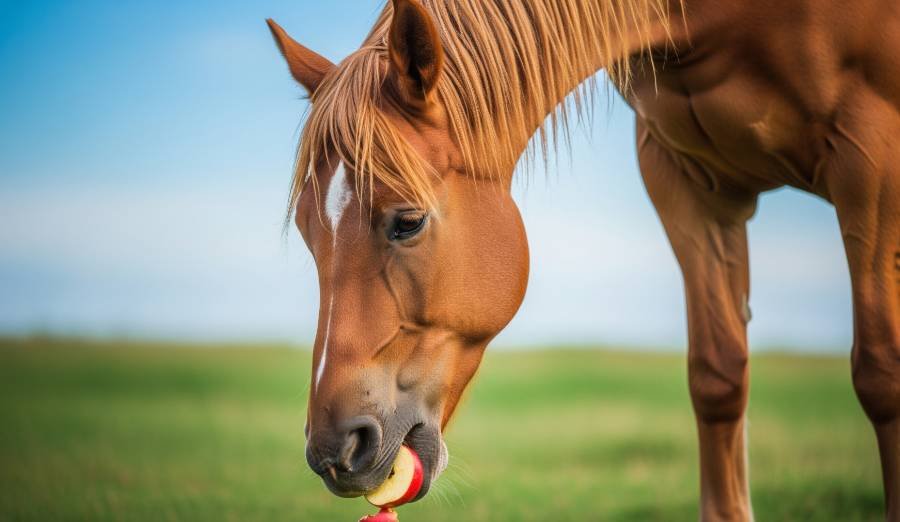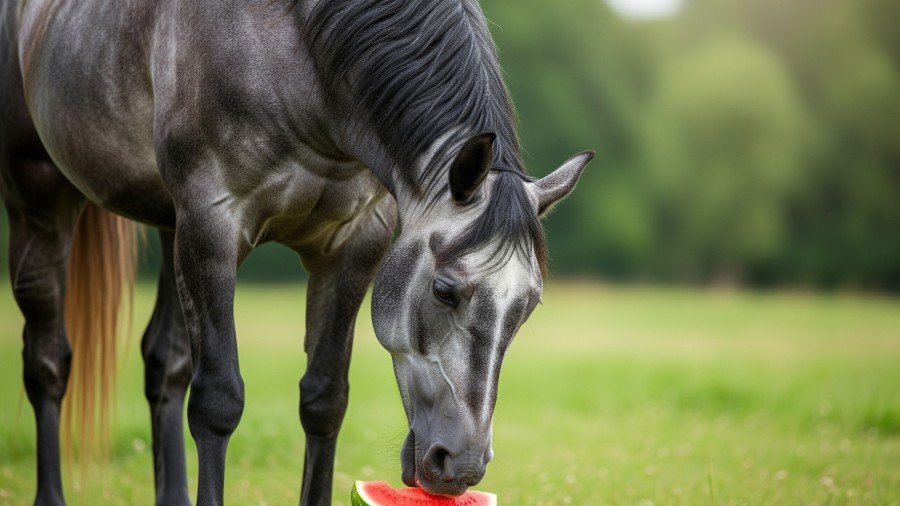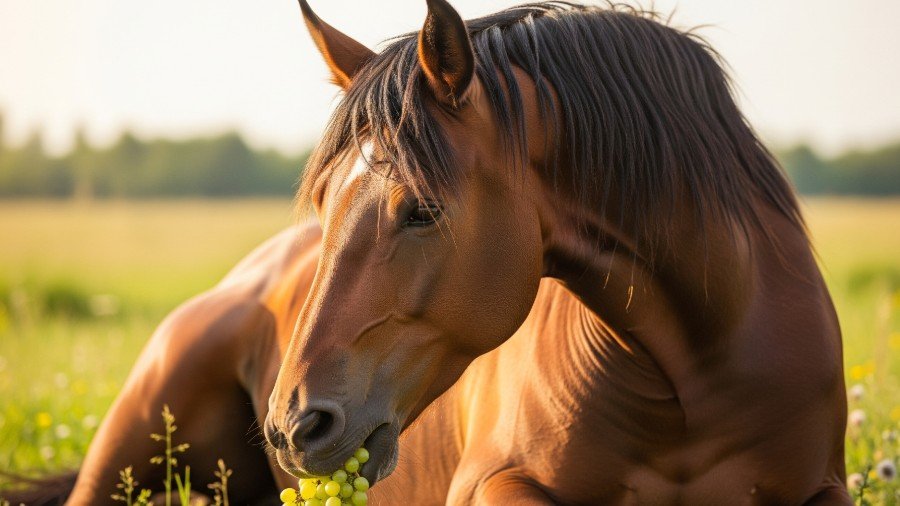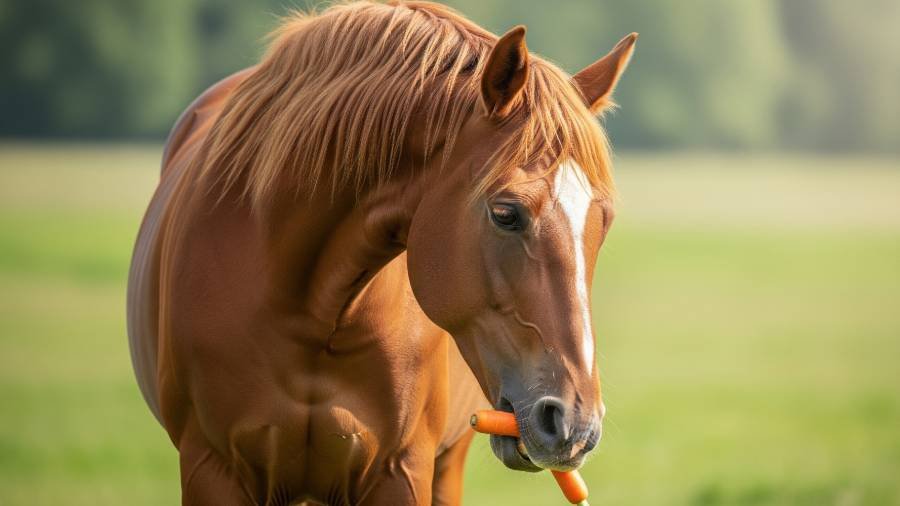Yes, horses can eat pumpkin as a safe and nutritious seasonal treat for horses when prepared properly, making it a favorite among horse treats.
As part of a balanced diet, pumpkin offers health benefits but should complement a horse’s primary forage and grain intake rather than replace it.

Potential Benefits of Pumpkin for Horses
When horses eat pumpkin in small amounts, it delivers several advantages that make it good for horses:
- Rich in Fiber: Pumpkin supports digestive health, aiding in regular bowel movements.
- Vitamins and Minerals: Packed with vitamin A and antioxidants, it boosts the immune system and overall wellness.
- Low Sugar: Its natural sweetness is gentle, suitable for horses with sugar sensitivities.
- Nitric Oxide Support: May enhance blood flow, benefiting muscle recovery after exercise.
- Hydration: The high water content helps keep horses hydrated, especially in dry seasons.
These benefits shine when feeding pumpkins to horses in controlled portions. For more on safe fruits and vegetables, explore do horses eat pumpkins.
Risks and Dangers of Pumpkin for Horses
While pumpkin is safe for horses, some risks should be noted:
- Choking Hazard: Large chunks or whole orange pumpkins can pose a risk if a horse swallows without chewing.
- Hyperkalemic Periodic Paralysis: Horses with this condition should limit potassium intake, as pumpkin contains moderate levels.
- Pesticide Residue: Non-organic pumpkin may carry chemicals, requiring thorough washing.
- Pumpkin Seeds: Uncrushed seeds can cause digestive upset or blockages if not removed.
- Overfeeding: Excessive cups a day can lead to weight gain or loose stools.
- Nutritional Imbalance: Relying on pumpkin can lack essential nutrients from a balanced diet.
How to Safely Feed Pumpkin to Horses
To ensure pumpkin is a safe treat, follow these guidelines:
- Wash Thoroughly: Rinse pumpkin under water to remove pesticides, even if organic, before feeding your horse.
- Remove the Stem and Seeds: Cut away the stem and scoop out seeds, or crush seeds to avoid choking hazard.
- Cut into Small Amounts: Slice into manageable chunks or mash to aid digestion and prevent blockages.
- Feed in Moderation: Offer a small portion (e.g., one cup or a few slices) once or twice a week, keeping treats under 10% of a horse’s daily intake.
- Avoid Additives: Serve plain pumpkin without sugar, spices, or butter, which can harm a horse’s digestive system.
- Monitor Reactions: Introduce pumpkin gradually and watch for colic, diarrhea, or allergies over 24–48 hours. Consult a vet if issues arise.
- Consult a Vet: Seek veterinary advice before feeding pumpkin, especially for horses with hyperkalemic periodic paralysis or digestive issues.
Signs of Pumpkin-Related Issues
If a horse eats pumpkin excessively or reacts poorly, look for:
- Colic, diarrhea, or reduced appetite
- Excessive gas or bloating from digestive upset
- Lethargy or muscle stiffness (in cases of potassium imbalance)
- Difficulty swallowing or choking (from large pieces)
- Skin irritation (rare allergic signs)
If these signs appear, stop feeding pumpkin and contact a veterinarian immediately. Severe digestive issues require urgent care.
Expert Opinions
Veterinary sources, such as the American Association of Equine Practitioners (AAEP), confirm that horses can eat pumpkin safely in moderation, highlighting its fiber and vitamin content. The AAEP recommends removing seeds and cutting into small pieces to prevent choking. For more on safe produce, check can horses eat carrots or can horses eat apples.
Additional Considerations
- Health Conditions: Horses with hyperkalemic periodic paralysis or laminitis should limit pumpkin intake. Consult a vet first.
- Young Horses: Foals may need softer, smaller pieces, as advised by a vet.
- Horse Preferences: Some horses love the taste of pumpkin horse treats, while others may not. If uninterested, try alternatives like those in can horses eat strawberries.
- Organic vs. Non-Organic: Organic pumpkins may reduce pesticide risk, but all should be washed.
- Seasonal Treat: Pumpkin is a perfect autumn treat, complementing regular feed.
Safe Treat Alternatives
Instead of pumpkin, consider these safe-for-horses treats, tailored to enhance a horse’s diet and offering internal linking opportunities:
- Apples: Small, cored apple slices provide vitamins. Learn more in our guide on can horses eat apples.
- Carrots: Sliced carrots offer crunch and nutrients. Check our guide on can horses eat carrots.
- Watermelon: Seedless chunks hydrate and delight. Explore our article on can horses eat watermelon.
- Cucumbers: Thin slices offer low-calorie hydration. See our guide on can horses eat cucumbers.
Introduce new treats gradually, monitor for reactions, and consult a vet if unsure about safety.
Horses can eat pumpkin as a safe, healthful treat for horses, offering benefits like fiber and vitamins when fed in small amounts.
However, risks such as choking hazard, potassium levels, or pesticide exposure require cutting pumpkin and portion control. Horses with health issues like hyperkalemic periodic paralysis or young ones should avoid pumpkin unless approved by a vet, and a balanced diet should remain the priority.
Always consult a veterinarian before introducing pumpkin or other fruits and vegetables. For more on equine nutrition, explore can horses eat bananas, can horses eat pears, or what do horses eat.
For additional questions about what horses can eat or nutrition, feel free to ask!




